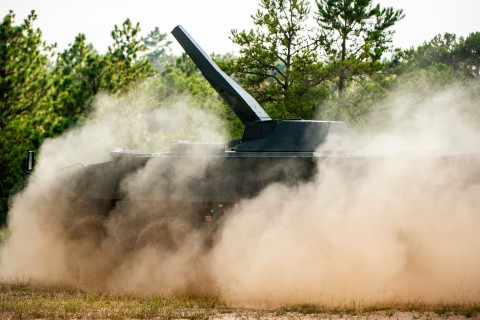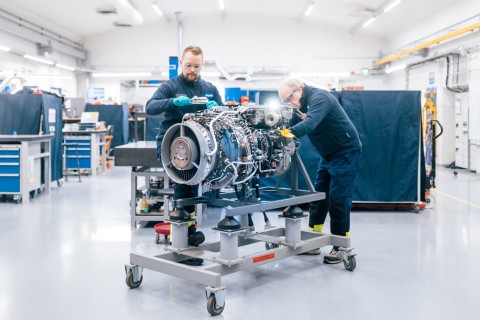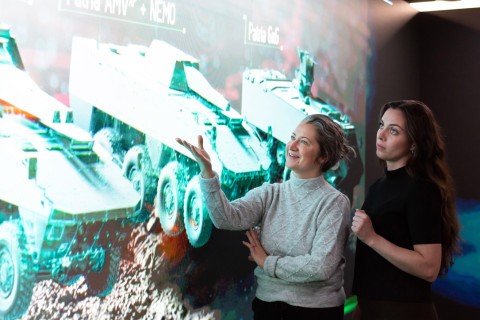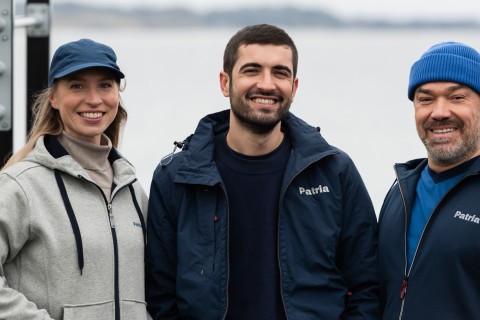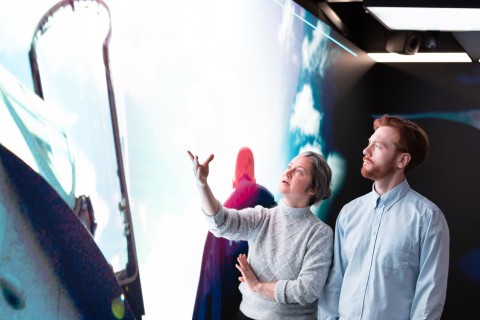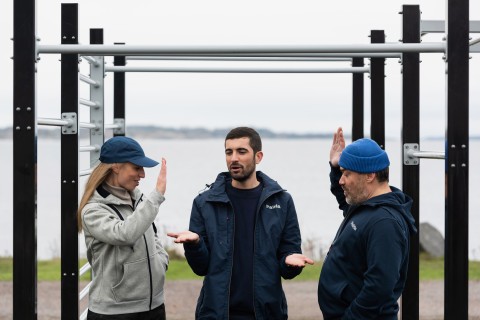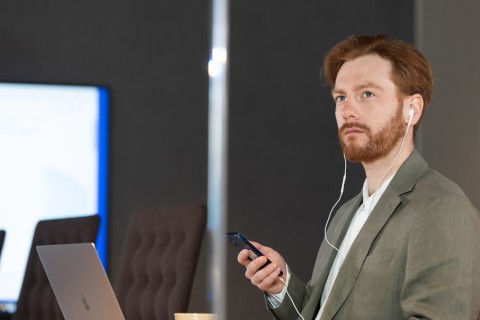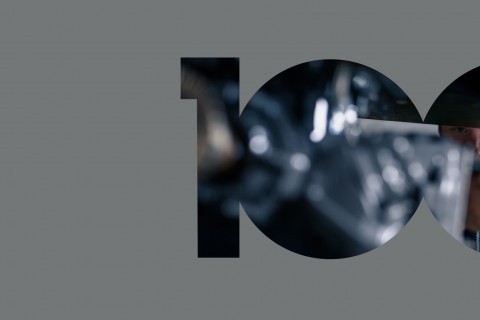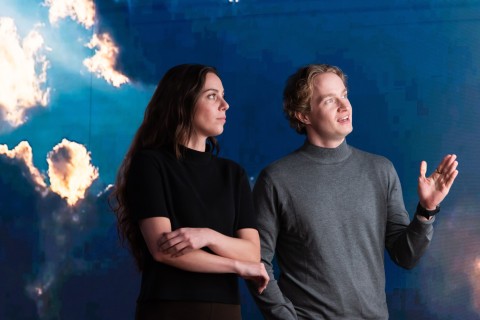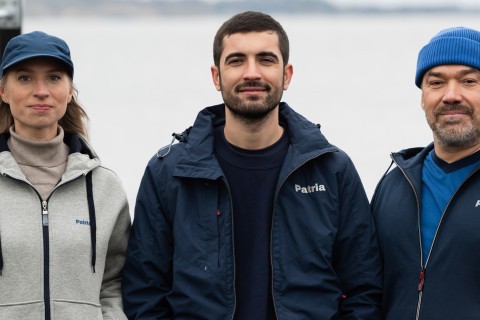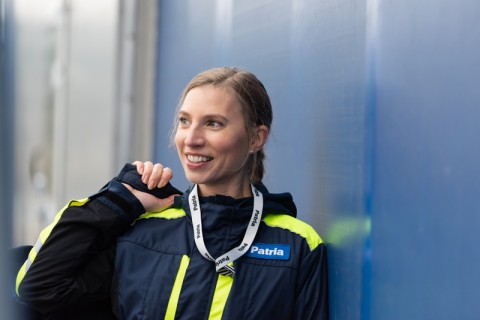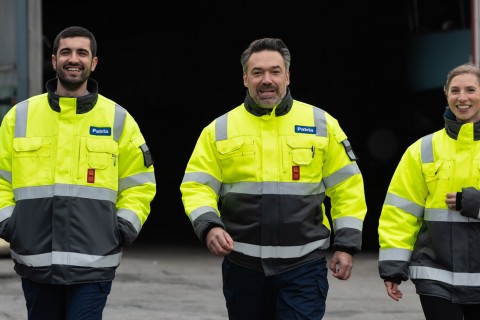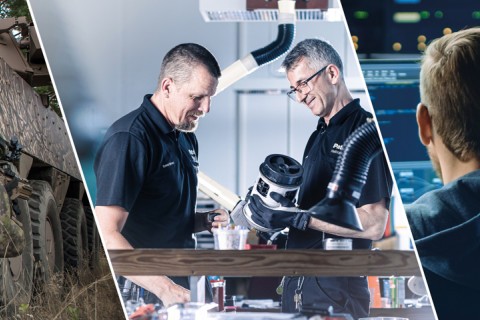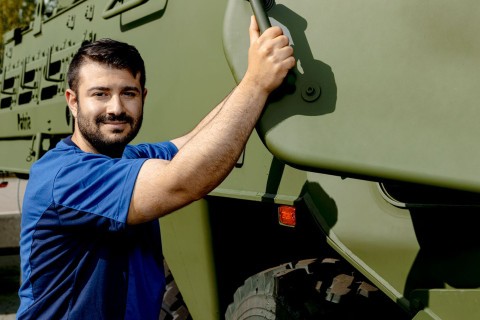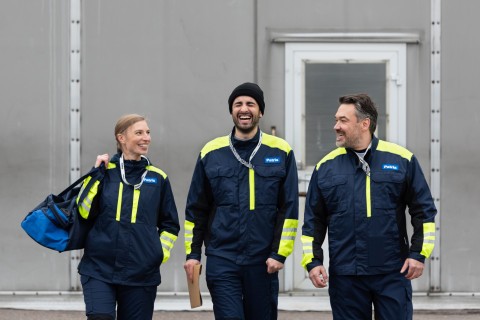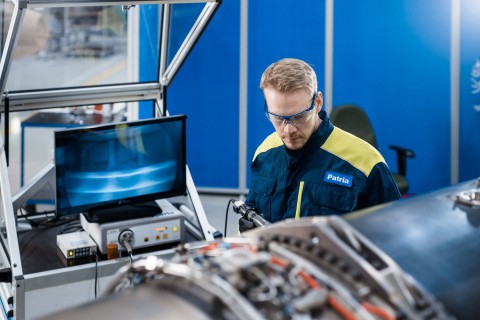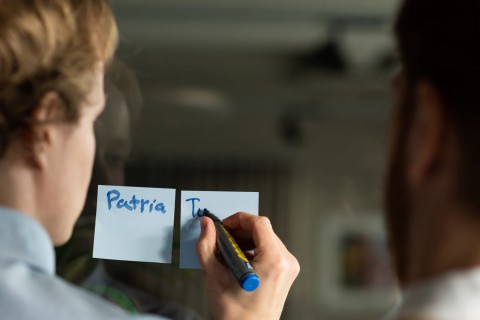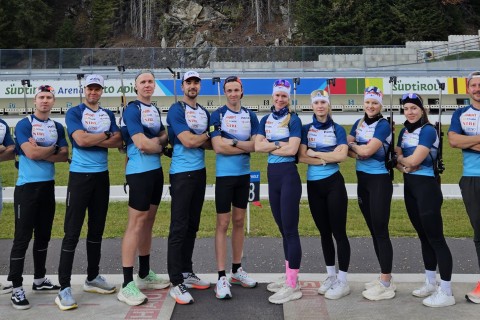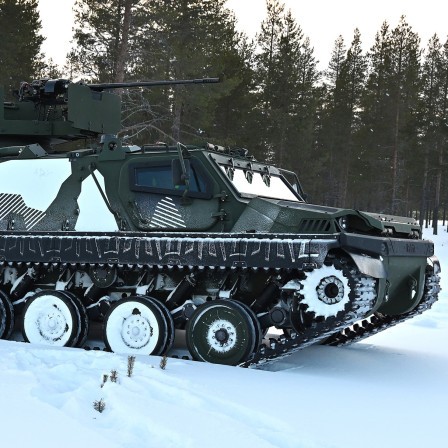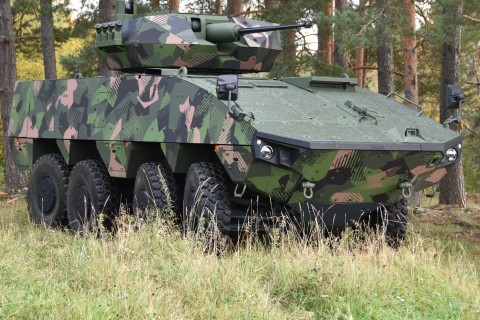
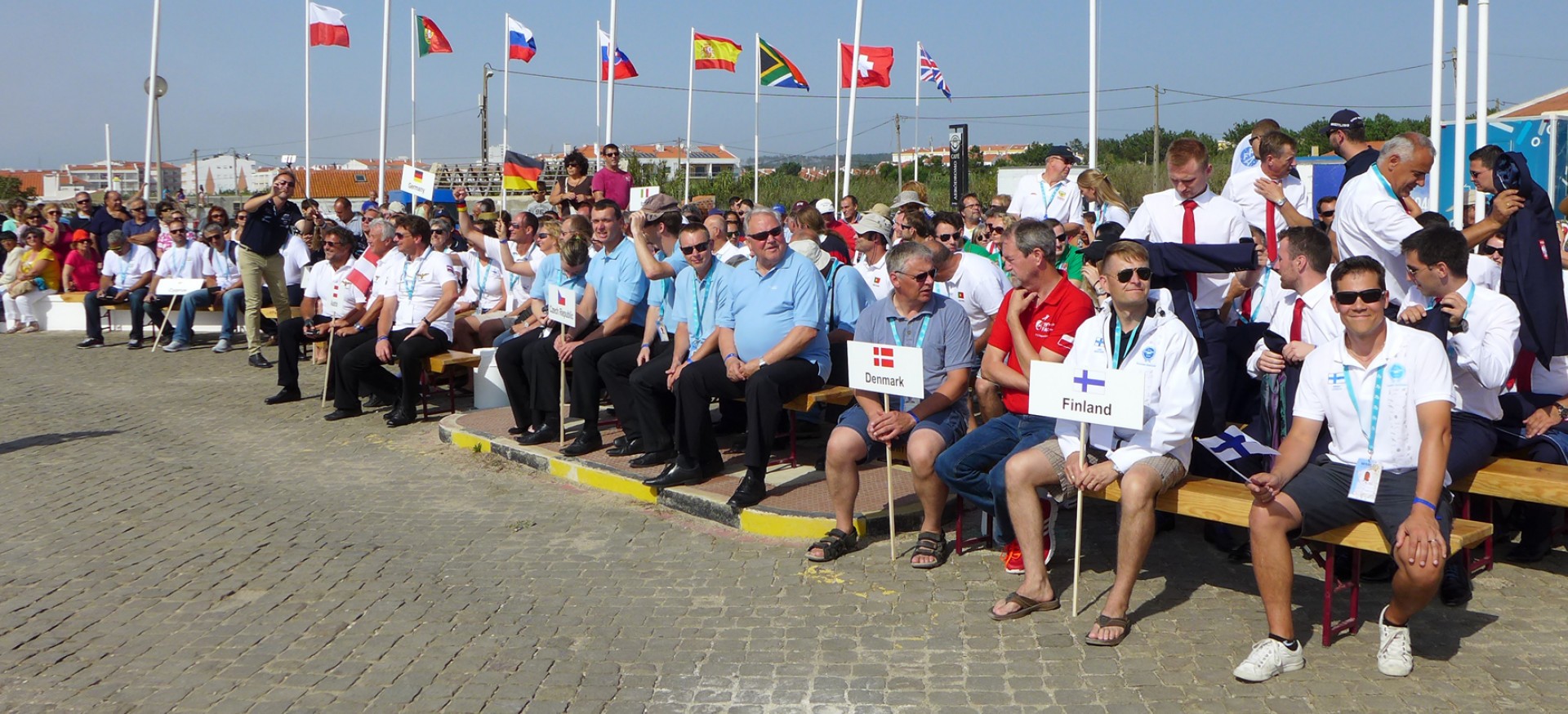
20th FAI Rally Flying World Championship held between 4 and 10 September in Santa Cruz, Portugal
5.12.2016
Patria was supporting Team Finland in the FAI Rally Championship 2016. Here are the Team’s greetings from the trip.
Text: Saku Joukas and Rami Lindström
Photos: Jari Mikkonen
Our team – team manager Jari Mikkonen, pilot Rami Lindström and navigator Saku Joukas – had the pleasure of representing our country and the Finnish Aviation Federation in the FAI Rally Flying World Championship in Portugal.
The venue was Aeroclube de Torres Vedras, Santa Cruz. Santa Cruz is a small seaport town, around one hour’s drive north of Lisbon. The town and airfield rub shoulders with the sea. While the cliffs offer a spectacular view, and the long beaches provide opportunities for swimming, surfing and sunbathing, flying was the main event for us.
Our eventful trip lasted two weeks, including the training flights. The first week was taken up with practical arrangements, aircraft rental, registration for the competition and training. The second week saw a spectacular opening ceremony, an intense competition and a prize award ceremony held in a stunning setting. We saw, experienced and learned a great deal about this exciting sport.
Pilot Rami Lindström (left), team manager Jari Mikkonen and navigator Saku Joukas.
Rally flying as a sport
Rally flying has its roots in Scandinavia. Originally, competitors were required to fly into the wilderness and to land, hunt for ordered prey, and return with it to the point of departure.
The current form of the sport has been streamlined and now comprises a navigation and timing test and a landing test. The navigation test involves staying precisely on course and keeping to a certain time frame. The pilot is responsible for passing these tests.
The unique and interesting aspect of this sport is the fact that the crew must determine the route, when seated in the aircraft before take-off, on the basis of the tips and hints given to them, and continue this process during the flight under the leadership of the navigator. In other words, while seated in the aircraft, moments before take-off the crew receives an envelope containing two blank maps, photos of certain points on the route, a turning point schedule, and hints and tips for determining the locations of turning points.
During the quick preparations for the flight, the crew determines the locations of the first three to five legs, plotting them on the map, measuring them, and drawing up a schedule for them, based on a flight with a length of 90–100 NM and around 15 legs. The crew may select a constructed ground speed; in our case, we flew a Cessna C152 at a speed of 70 knots. Around 16 to 20 photos of points on the course are provided and the number of sheets is around four. Furthermore, the envelope contains photos – either authentic or false – of the turning points. The cockpit is a sweaty hive of activity.
The flight is concluded by making two precision landings using the engine, for which a score is given on a different basis to the precision flight. After the flight is over, the crew has ten minutes to measure and plot (on a map) the points and locations depicted in the photos before returning the answer sheet and loggers. Penalty points for navigation, observation and landing errors are added up in the final score.
Roles and responsibilities within the Team
The pilot is the captain of the aircraft, and makes all of the decisions. The pilot’s main duty is to keep the aircraft on course, ensuring that the time frame is followed and points of interest are observed. The navigator provides the pilot with legs plotted on the map. The crew has two maps. The pilot and navigator keep exchanging maps, ensuring that the pilot has a map on the current leg(s) at all times, while the navigator is preparing the next legs on the other map. Since the course will be ultimately determined after the aircraft has taken off, in the worst-case scenario the pilot may receive a new map from the navigator during the initial leg. On occasions, even for us this meant that the pilot asked the navigator whether to turn left or right and for the next bearing only a minute before a turning point. In other words, this kind of flying required strong nerves as well as precision.
The navigator determines the course on the basis of hints and tips, plotting it on the map. As far as possible, the navigator should provide the pilot with support during observation and navigation. In our case, the distribution of work functioned in such a way that, at regular intervals and on the pilot’s orders, the navigator scanned the starboard observational area, after which he returned to the wonderful world of map plotting. Tips on the course typically included an anchor point, from which a bearing, a distance and a cross bearing to a turning point were measured. In addition, the tip on turning points included a description of a turning point which could be as follows: “junction red & yellow roads” or “creek crossing black road”. An anchor point could be a coordinate point, a distinct landmark such as a railway station or an airfield, as well as the previous turning point. The bearings and distances determined at an anchoring point could be real courses, magnetic courses, nautical miles, kilometres, or the circles drawn with a pair of compasses. The crew had to be focused and there was no allowance for errors, as they would be amplified as the flight progressed.
The Team Manager’s duties proved surprisingly difficult. The manager acted as a decision maker on competition issues affecting the team, such as requests for rectification and protests. In particular, if a team was large (as it was in the case of France and Poland), the manager was tasked with making decisions as to whether benefiting the entire team should be prioritised, or whether a particular competitor should be favoured. A manager acts as a link between the management of the competition, the organisers and the competitors. This being the case, competitors have no need to waste their energy on issues unrelated to flying, as the manager handles all schedules and any wrangling required. For our single team, having one manager worked just fine but, for example, the Poles and French fielded five to seven crews and three to four team managers.
The joy of flying: training, the competition and a force landing
Prior to the competition, we had the opportunity to make one flight to become familiar with the plane, and there were two official training flights. The second training flight culminated in us avoiding a fog bank rolling in from the sea, which forced us to land on an alternative airfield. The airport used in the competition, Santa Cruz (LPSC), was located on the seaside, and, when the winds abated, hot air would rapidly generate level CAT II IFR conditions. The alternative airport, Santarem (LPSR), was located approximately 30 NM away and had a fleet of around 15 planes. At Santarem, we found that the airport had no fuel or water available on Sundays. While watching the blue sky from the shade provided by a sheet metal hangar and in 35 degrees of heat, it was hard to believe that completely unflyable conditions could occur in Portugal...
A fog bank rolling in from the sea caused problems with the schedule. After a training flight, the competition managers made the wise decision of waiting for the weather to clear up before the fleet of aircraft were sent on their way. Weather permitting, all 52 crews flew the courses assigned to them, while divided into a morning and evening group. Crews such as ours, which were classified as Advanced, had no time to take off on Wednesday; we flew on Thursday instead.
Flying the route proved to be a challenge. While the terrain in Portugal is open and rolling, the number of small or medium roads and villages seems unending. On some occasions, the routes ran along easily navigable railway tracks, but also followed wide arcs which really separated the wheat from the chaff. Reading the map and terrain was difficult for a Nordic aircrew, while locating intersections between dirt tracks was an endless source of ‘blood, sweat and tears’.
On the other hand, moments of success were all the more gratifying. On Thursday, the competition ended after a Danish crew had to make a forced landing in one of the most distant corners of Portugal. Allan and Arne had almost made it to the finishing line when their engine suddenly began to overheat and then died. However, Allan kept a cool head, landing his plane on a narrow dirt strip in the middle of a vineyard. It was a perfect landing and the plane did not suffer a scratch. They were even granted points for their course, as they crossed the finishing line. However, as an indication of the toughness of rally flying, they lost 200 penalty points for flying into a wrong direction, during the forced landing itself! Although the crew was not injured, the search operation led to the cancellation of the Friday event. As the crews were not allowed to bring mobile phones on board, it was not until evening that the two Danish gentlemen were found at a police station a small village. To our annoyance, we missed our last chance to fly and improve our score.
A total of 52 teams participated in the competition, with 23 competing in the Unlimited and 29 in the Advanced class. This was the first time that Finland had competed in a major rally flying competition. With regard to the outcome, the competition was a huge disappointment for us (we came 22nd in the Advanced class). On the other hand, we learned a great deal and gained a large number of contacts which will prove useful in Finland.
With regard to the courses, results service and flight data, the arrangements were excellent. On the basis of gestures, those of us dealing with administrative issues soon learned to recognise the legendary phrase: “not today, but maybe tomorrow”. Providing meals for almost 200 people and organising the competition required logistics covering everything from toilets to meals and from isolation areas for aircraft to quarantines, as well as a host of other details. In sum, we should raise our hats to those organising a competition on this scale.
Thank you!
A big thank you to Patria for sponsoring us. Patria’s support enabled us to participate in this exciting competition. We hope that we can return to Finland with new know-how and spread the good news about rally flying. This sport represents a major addition to the excitement, experience and content of basic aviation. New aviators can be recruited to participate in rally flying, while keeping the costs within reasonable bounds. The navigator does not need a private pilot’s licence, enabling aviation to gain a new social dimension through friends, children or spouses.
Ours was an amazing trip, involving major challenges and a range of positive experiences. We keenly await the 21st FAI Rally Flying World Championship in the Czech Republic in 2018!
What did you like about the article?
Thank you for your opinion! You can share the article on social media using the buttons below:
